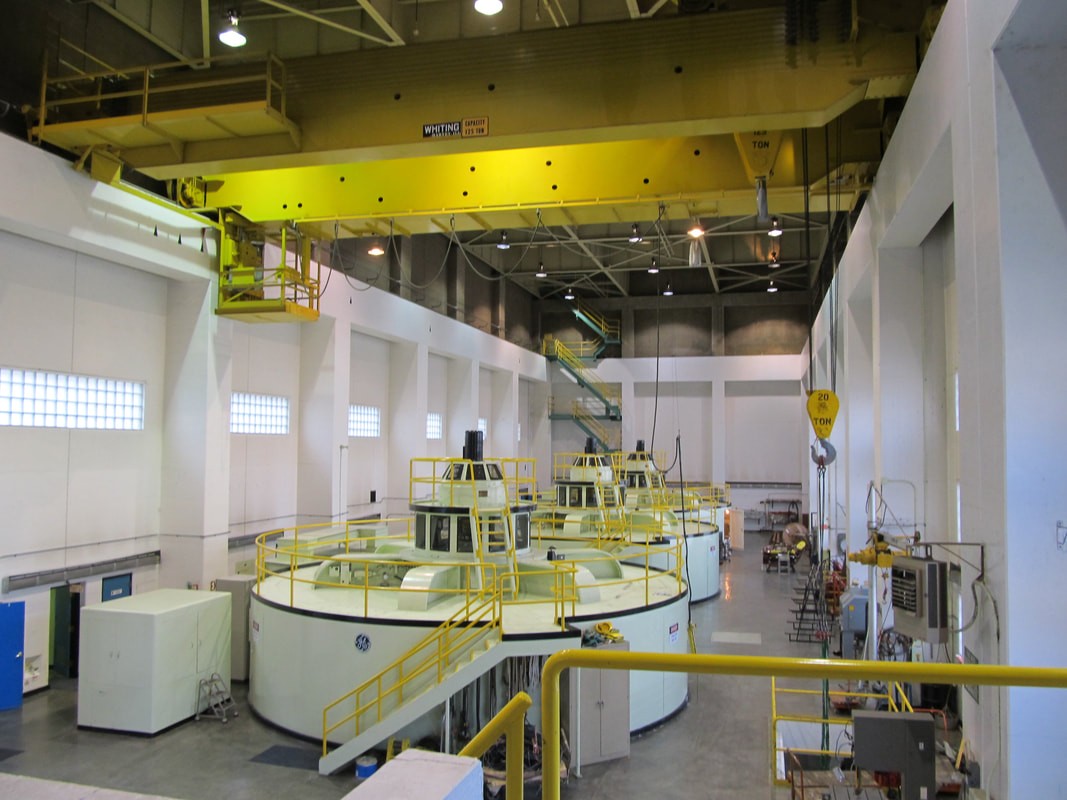Bureau of Reclamation Hydroelectric Powerplants
Seismic Evaluation of Nonstructural Components
CCS Group performed seismic evaluations of nonstructural components & systems at six Bureau of Reclamation powerplants (Trinity, Spring Creek, and JF Carr Powerplants in Northern California; Yuma Mesa Pumping Plant in Arizona, Senator Wash Powerplant in Southern California, and Canyon Ferry Powerplant in Montana).
The seismic evaluation of nonstructural components included a detailed and comprehensive review of anchorage and interaction effects for nonstructural components and systems throughout the powerplants. A detailed inventory of equipment and systems was assembled on a room-by-room basis and a priority level was assigned to each item. Equipment and systems affecting occupant safety (emergency lighting, smoke evacuation, fire suppression) and power distribution were evaluated for Immediate Occupancy performance, and all other components were evaluated for Life Safety performance.
ASCE/SEI 31-03 Tier 1 procedures were used to evaluate discrete components and equipment. Seismic vulnerability of distributed nonstructural systems (piping, cable tray, bus duct, HVAC duct) were evaluated using DOE-0545 criteria (Earthquake Experience Data). Components failing the Tier 1 evaluation criteria were further evaluated using Tier 2 evaluations that considered refined assumptions for loads and anchor capacities.
Nonstructural anchorage deficiencies were identified that included missing, undersized, or improperly installed anchor bolts. Interaction effects were also observed and included unbraced distribution components, overstressed partition walls that could crack and compromise the anchorage of equipment mounted to it, or unanchored equipment that could overturn and impact critical plant equipment.
The seismic evaluation of nonstructural components included a detailed and comprehensive review of anchorage and interaction effects for nonstructural components and systems throughout the powerplants. A detailed inventory of equipment and systems was assembled on a room-by-room basis and a priority level was assigned to each item. Equipment and systems affecting occupant safety (emergency lighting, smoke evacuation, fire suppression) and power distribution were evaluated for Immediate Occupancy performance, and all other components were evaluated for Life Safety performance.
ASCE/SEI 31-03 Tier 1 procedures were used to evaluate discrete components and equipment. Seismic vulnerability of distributed nonstructural systems (piping, cable tray, bus duct, HVAC duct) were evaluated using DOE-0545 criteria (Earthquake Experience Data). Components failing the Tier 1 evaluation criteria were further evaluated using Tier 2 evaluations that considered refined assumptions for loads and anchor capacities.
Nonstructural anchorage deficiencies were identified that included missing, undersized, or improperly installed anchor bolts. Interaction effects were also observed and included unbraced distribution components, overstressed partition walls that could crack and compromise the anchorage of equipment mounted to it, or unanchored equipment that could overturn and impact critical plant equipment.



